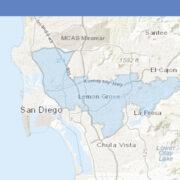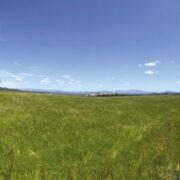DESPITE the August 23, 2010 hostage drama incident which left 8 Hong Kong nationals dead, the Philippines is still optimistic that it will be able to double the number of tourist arrivals in the country – from 3 million to 6 million by 2016.
This was what the country conveyed to China through the efforts of Tourism Secretary Alberto Lim, who, along with a delegation of more than a dozen Filipino travel and tour operators, made a visit to Beijing from April 10 to 13 to promote the Philippines in China’s outbound travel market.
In a meeting with his Chinese counterpart, Chairman of the China National Tourism Administration (CNTA) Shao Qi Wei at the CNTA headquarters in central Beijing, Lim said that China is “a very important market for Philippine tourism,” and that the Aquino administration “is working hard to improve infrastructure, facilities, and services in preparation for the arrival of more Chinese tourists.”
In 2010, more than 200,000 Chinese travelers visited the country – an annual growth of 18 percent which makes China one of the fastest-growing markets for Philippine tourism.
As a close neighbor with the largest number of outbound tourists in the region, China is expected to become a key source of tourist arrivals.
The Aquino administration’s open-skies policy, which presents more relaxed visa policies and measures to assure and enhance the safety of tourists would greatly help in reaching the six-million arrivals in 2016. After all, the tourism industry has the potential to generate more jobs for Filipinos.
However, the recent rating of NAIA 1 as one of the world’s 10 worst airports and the worst in Asia in 2010 puts a damper into the whole scenario. This is where the Aquino administration’s promise of improving infrastructure, facilities and services for prospective tourists should come in.
“The Guide to Sleeping in Airports,” a travel website, has ranked NAIA Terminal 1 as the fifth worst in the world, behind Charles De Gaulle in Paris and the Los Angeles and Moscow airports.
Here, reviews of air travelers were given great consideration. Complaints were mostly about “safety concerns, lack of comfortable seating, rude staff, hostile security, poor facilities, non-existent (or few) services to pass the time, bribery and general hassles of being in the airport.”
Complaints that were particular to the NAIA 1 Terminal (which hosts all international flights except Philippine Airlines) include being likened to a “bombed-out ruin” and “a cattle yard, only worse,” filthy toilets, no seating once you get through customs, “rife in bribery and corruption,” “scams start the minute you walk off the plane,” among others.
Nevertheless, the website acknowledges that Terminal 3 is “spacious, clean and has internet connection.”
Manila International Airport Authority General Manager Jose Angel Honrado said that they appreciate the feedback and are aware of the deficiencies. He also said that they are working on making the necessary improvements and that the public should understand that upgrading the facilities of a 30-year-old terminal takes time.
He is also hoping that coordinating with immigration and customs offices would be instrumental in eradicating bribery. Honrado is optimistic that all international flights will eventually be moved to the more comfortable and pleasant Terminal 3.
Legal troubles involving compensation disputes with Philippine International Air Terminals Co. are currently hampering the move, but he sees no reason to put off plans to develop it into a fully operational facility within one and a half years, because the government clearly has a mandate to operate the terminal.
While the Department of Tourism’s promotional efforts are truly commendable, it still all boils down to “what you see is what you get.” Doubling the number of tourist arrivals would entail quadrupling the country’s efforts in fulfilling its improvement goals. But worst situations bring out the best in people and in this case, the best in three forms – our relations with China, more jobs for Filipinos and yes, a more pristine airport for tourists and Filipino travelers alike to enjoy.
(www.asianjournal.com)
(LA Weekend April 16-19, 2011 Sec A pg.12)




